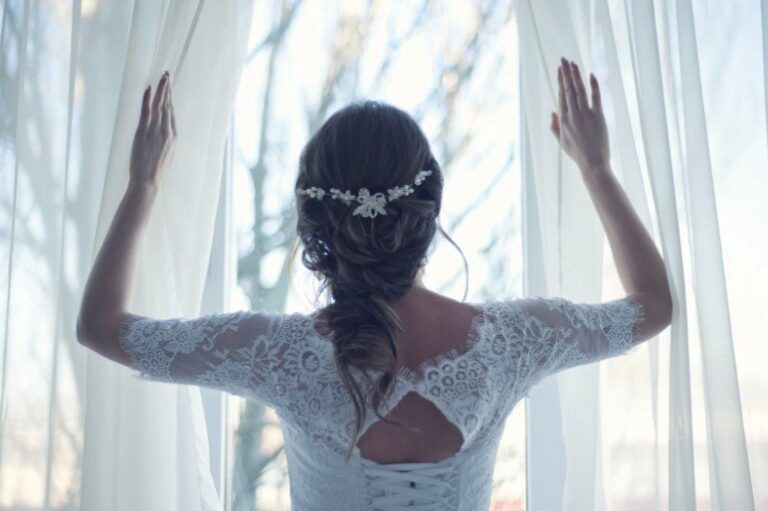Historical Context of Classic Wedding Dresses
The history of wedding dresses offers a fascinating journey through time. Like all aspects of fashion, they’ve undergone significant transformations over the centuries. The classic wedding dress that we often admire and cherish today is a beautiful amalgamation of influences drawn from numerous epochs, traditions, and diverse cultures from across the globe.
Each era left its indelible mark, contributing to the refinement and enhancement of the dress’s design. Rooted deeply in a timeless appeal, these classic dresses embody designs that have not only stood the test of time but have also beautified countless brides across generations. Their persistent allure and unwavering charm make them a perpetual favorite and an emblem of tradition in the ever-evolving world of bridal fashion.
Defining Features of Classic Wedding Dresses
A classic wedding gown is often crafted using luxurious materials like satin, silk, and tulle. The familiar silhouettes, from the elegant A-line to the grandiose ball gown, are designed to exude a sense of regality and tradition. Such dresses often flaunt intricate embellishments and delicate lacework that add to their vintage charm.
Necklines, whether it’s a modest boat neck or a deep V-neck, are typically crafted to complement the silhouette, staying true to traditional designs. The color palette, too, often leans toward pristine whites or subtle off-whites, emphasizing purity and simplicity.
Transition to Modern Wedding Trends
Over the years, as society evolved and transformed, the realm of bridal fashion did not remain untouched by these changes. The dynamic shifts in societal norms, values, and aesthetics, paired with brides’ growing desire to embrace individuality, led to the birth of groundbreaking and avant-garde bridal designs.
The conventional templates of yesteryear gradually gave way, paving the path for modern wedding dresses. These dresses not only symbolize the ever-changing palette of fashion but also resonate with a contemporary bride’s aspiration to stand out and celebrate her distinct style on her special day.
Defining Features of Modern Wedding Dresses
Modern bridal gowns are a canvas for creativity. Using a plethora of materials, including sleek crepes or even sheer fabrics, these dresses are crafted to redefine norms. Silhouettes have expanded beyond the traditional, introducing brides to options like chic jumpsuits or playful two-piece sets.
Asymmetrical cuts offer a break from the expected, and the advent of bold colors and patterns provides brides with the chance to truly reflect their personalities. Distinct necklines, daring open backs, and contemporary design elements make modern wedding dresses a manifestation of current-day panache.
Factors Influencing the Choice Between Classic and Modern Styles
When choosing between classic and modern, several factors come into play. Your personal style is paramount. A bride should feel authentically herself, and the dress should amplify her inherent beauty and comfort.
The venue and theme of the wedding also play crucial roles. A grand castle might call for a classic gown, while a beach wedding could lean toward a modern, breezy outfit. The season and prevailing climate are essential considerations as well; after all, comfort is key. And of course, while budgetary considerations are vital, it’s equally important to remember the balance between tradition and personal expression.
Blending the Best of Both Worlds
In today’s age, brides aren’t restricted to choosing one style over another. Fusion designs are gaining popularity, allowing brides to enjoy the best of both worlds. These designs seamlessly marry the timeless elements of classic gowns with the edgy details of modern dresses. Opting for such a blend allows brides to embrace tradition while adding a personal and contemporary touch, crafting a unique bridal look.



